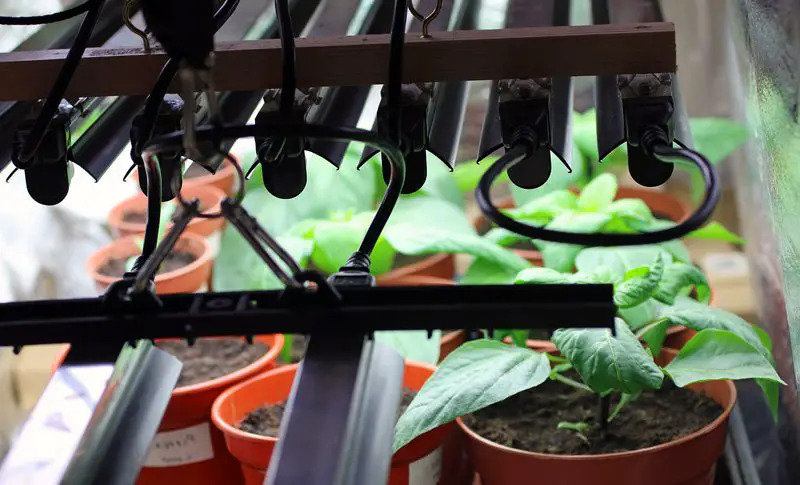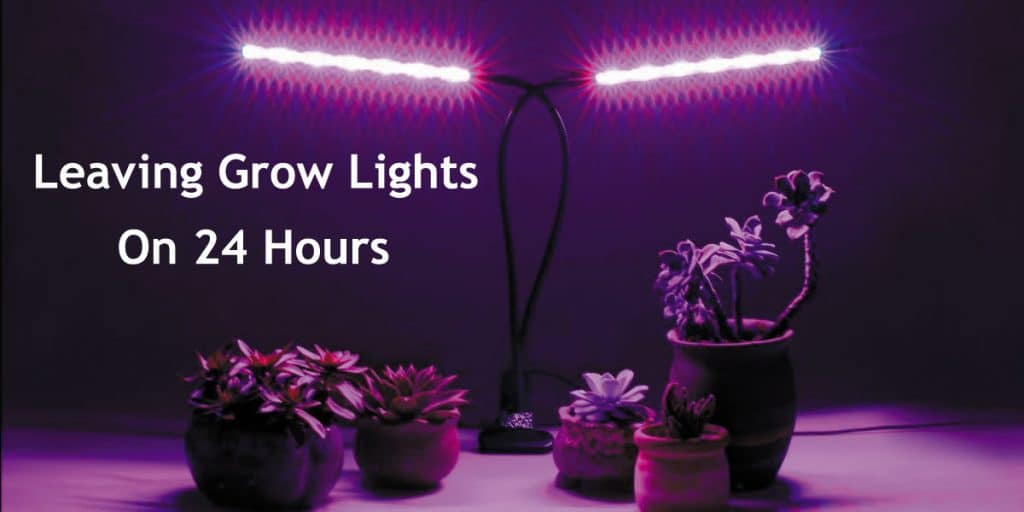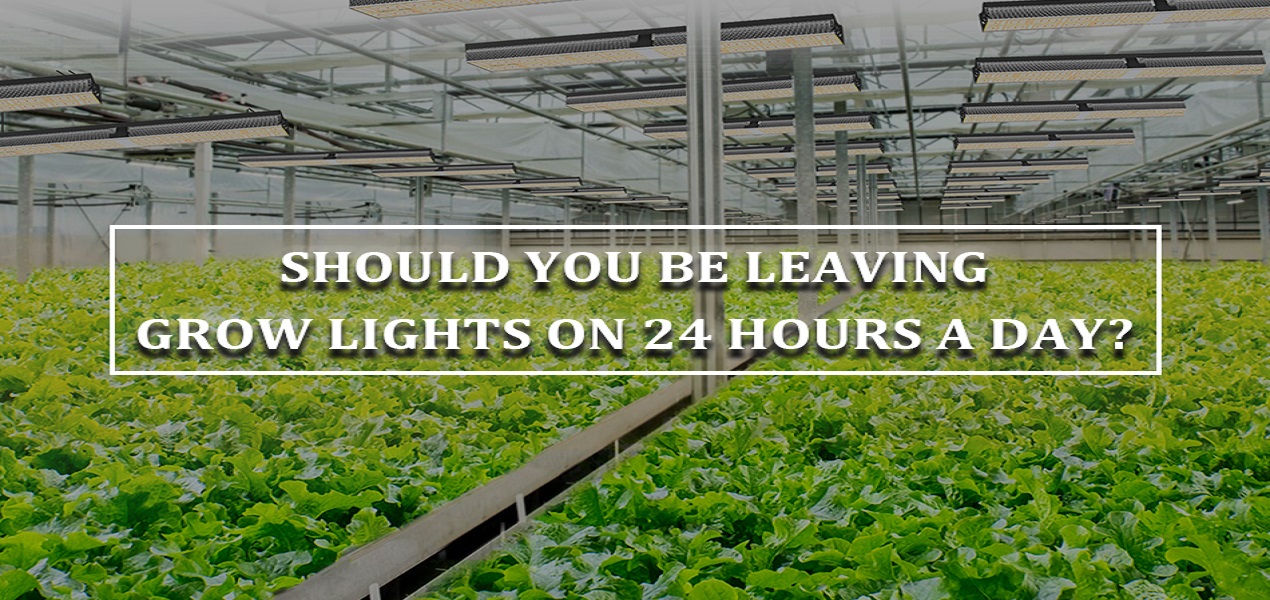Keeping grow lights on for 24 hours a day is a common practice among indoor gardeners. While it may seem beneficial to provide plants with constant light, it is important to consider the impact on their growth and the need for a rest period.
Plants use light for photosynthesis, a process that converts light energy into sugars for growth. However, they also require a period of darkness to carry out certain biochemical processes. During the dark period, plants respire and utilize the stored energy from photosynthesis to support their growth.
Length Of The Light-Dark Cycle And Plant Growth
The length of the light-dark cycle, also known as the photoperiod, plays a significant role in the growth and development of plants. This cycle mimics the natural pattern of sunlight and darkness that plants experience in their natural environment.
The optimal length of the light-dark cycle varies depending on the type of plant and the specific growth stage. Most plants thrive with a light-dark cycle of approximately 16-18 hours of light and 6-8 hours of darkness during their vegetative phase. During the flowering phase, some plants require a shorter light-dark cycle, typically around 12 hours of light and 12 hours of darkness.
Benefits of 24-Hour Lighting
Many indoor gardeners wonder if they can leave grow lights on 24 hours a day. While plants do need periods of darkness for certain biochemical processes, there are actually several benefits to providing continuous light to your plants.
Faster Plant Growth
Grow lights are a popular source of artificial light for indoor plants, allowing them to receive the necessary light energy for photosynthesis and growth. One question that often arises is whether it is safe and beneficial to leave grow lights on for 24 hours a day.
There are several factors that contribute to faster plant growth under 24-hour lighting. Extended periods of light exposure can accelerate the growth stages in plants, particularly the vegetative phase. This phase is crucial for the development of strong stems, healthy foliage, and overall plant growth.
Providing sufficient light during these growth stages has several benefits. Increased photosynthesis occurs when plants have access to light for longer periods, resulting in more energy production and faster development. This can lead to stronger and more robust plants.
The concept of using 24-hour lighting to promote rapid growth is particularly popular among indoor growers. By mimicking longer daylight hours, growers can speed up the vegetative phase and achieve faster plant growth overall.
Increased Yields
Leaving grow lights on for 24 hours a day may seem like a way to increase yields for indoor plants, but it's important to understand that this approach may not always result in bigger harvests. While light is essential for plant growth, there are certain factors that growers need to consider to optimize yield.
One crucial factor is the strain of the plant. Different strains have varying light requirements, with some needing more light than others. It's important to research the specific light needs of the strain you are growing to ensure you provide the right amount of light.
Different types of grow lights emit varying light spectrums, which affect plant growth and development differently. Understanding the light spectrum requirements of your plants can help you determine the most suitable light source for optimal yields.
More: How Long Do LED Grow Lights Last?
Drawbacks of 24-Hour Lighting
While it may be tempting to leave grow lights on continuously in hopes of maximizing plant growth, there are several drawbacks to consider.
Less Natural Light and UV Rays
Growing plants indoors with the help of grow lights has become increasingly popular among indoor gardeners. However, it is important to consider the impact of leaving grow lights on 24 hours a day on the availability of natural light and UV rays, both of which are crucial for plant growth and development.
Prolonged exposure to artificial light can have negative consequences on plants. They rely on natural light and UV rays for various biochemical processes, including photosynthesis and nutrient absorption. Limited exposure to natural light and UV rays can result in reduced photosynthetic activity, which is essential for the production of food for the plant. This, in turn, can negatively affect the overall growth and health of the plants.
To mitigate this issue, it is recommended to provide periodic exposure to sunlight or use full-spectrum grow lights that mimic natural sunlight. Full-spectrum grow lights emit a wide range of light wavelengths, including UV rays, which can help compensate for the limited natural light and UV exposure.
Heat Production and Electrical Use
When considering leaving grow lights on 24 hours a day, there are several factors to keep in mind regarding heat production and electrical use. Grow lights emit heat while running, and prolonged usage can result in excessive heat buildup in the growing environment. This excess heat can negatively impact plant growth and health.
High temperatures can cause plants to become stressed, leading to wilting, leaf damage, and even death. Additionally, excessive heat can disrupt the optimal temperature and humidity levels required for healthy plant growth. It is crucial to maintain the right balance to prevent heat stress and other related issues.
To manage heat effectively, additional equipment may be needed, such as ventilation fans, exhaust systems, and air conditioning units. These tools help regulate the temperature and remove excess heat from the growing space. It is also essential to monitor humidity levels to prevent moisture-related problems such as mold or fungal growth.
Unnatural Environment for Plants
Subjecting plants to 24-hour lighting can create an unnatural environment that can have potential drawbacks on their growth and development. While providing continuous light may seem beneficial to plants, it can actually have adverse effects.
Plants are accustomed to natural light cycles, including periods of darkness, which play a crucial role in their growth. In a natural environment, plants rely on a balance between light and darkness to regulate their biochemical processes. These processes include photosynthesis, respiration, and hormone production, which are essential for plant growth and development.
An artificial light setup that constantly provides light disrupts this balance and can negatively impact plant growth. Factors such as light intensity, duration, and quality can also contribute to the unnaturalness of the setup. Plants may receive an excessive amount of light, which can lead to overexposure and cause damage to their leaves and stems. They may also experience stress and become more susceptible to diseases and pests.
Plants require a period of darkness to undergo essential physiological processes, such as the conversion of carbon dioxide into carbohydrates and the stimulation of flowering. Without a period of darkness, plants may become stunted or fail to flower. This can be particularly problematic during the flowering stage, as the absence of darkness can hinder the transition from the vegetative phase to the flowering phase.
More: How Far Should Your Grow Light Be From Plants?
How to Make 24-Hour Lighting Work?
Indoor gardening has gained popularity over the years, and for those who don't have access to natural sunlight, grow lights have become an essential light source for their plants. One common question among growers is whether it is possible to leave grow lights on for 24 hours a day. The answer is yes, you can do it, but it is important to understand the effects and consequences of continuous light exposure on your plants. Leaving grow lights on 24/7 can have both positive and negative impacts on plant growth, and it is crucial to find the right balance to ensure healthy and thriving plants.
Read More: Grow Lights for Seedlings.
Selecting the Right Light Bulbs and Source
When it comes to indoor plant growth, selecting the right light bulbs and light source is crucial for ensuring healthy and flourishing plants. With the advancements in technology, there are various options available to provide the required light spectrum for plants.
One of the factors to consider when choosing light bulbs is spectral wavelengths. Different plants have different light requirements, and it's important to choose bulbs that emit the appropriate wavelengths. For example, blue light is ideal for promoting leafy growth, while red light stimulates flowering and fruiting.
Energy efficiency is another important aspect to consider. LED grow lights have gained popularity in recent years due to their high energy efficiency and long lifespan. These lights consume less energy and emit less heat compared to traditional light bulbs, making them a cost-effective and safe option for indoor gardeners.
Other light sources suitable for indoor plants include fluorescent lights and high-intensity discharge (HID) lights. Fluorescent lights are affordable and emit a wide range of spectra, making them suitable for various stages of plant growth. HID lights, on the other hand, are more powerful and provide intense light needed for the flowering and fruiting stages of plants.
FAQs
Does More Light Mean More Yield?
Light plays a crucial role in the growth and development of plants. Adequate light exposure is essential for photosynthesis, the process by which plants convert light energy into chemical energy to fuel their growth. Consequently, the relationship between light and yield in plants is closely intertwined.
Increasing light exposure can lead to higher yields in plants. When plants receive more light, they are able to produce more energy from photosynthesis, which results in faster and more robust growth. In particular, increasing the light intensity during the flowering stage can promote larger and denser blooms. Additionally, extended periods of light can accelerate growth and shorten the time needed for plants to reach maturity.
What Happens To A Plant That Is Kept Under Constant Light?
When a plant is kept under constant light, it can have various effects on its growth, health, and flowering phase. While light is crucial for photosynthesis and plant growth, continuous exposure to light without any dark periods can have negative consequences.
Constant light can cause stress to the plant, disrupting its natural biochemistry and physiological processes. This stress can make the plant more vulnerable to diseases and pests, as its defenses may be compromised.
Additionally, constant light can lead to tissue damage in plants. The excessive light can result in the accumulation of reactive oxygen species, which can harm the plant cells and tissues. This can hinder the plant's growth and overall health.
What Is The Ideal Amount Of Light Exposure For Plants?
The ideal amount of light exposure for plants is crucial for their growth and development. Plants require a specific amount of light in order to carry out photosynthesis, the process by which they convert light energy into chemical energy. This energy is then used to fuel various biochemical processes that are essential for the plant's growth.
One way to measure the ideal light exposure for plants is by considering the moles of light required. A mole of light is a unit of measurement that quantifies the amount of light energy received by the plant. Different types of plants have different light requirements, and these requirements also vary depending on the growth stage of the plants.
LED grow lights are an excellent option for providing the ideal light exposure to plants. LED grow lights with specific PPFD (Photosynthetic Photon Flux Density) values can deliver the necessary moles of light during both the vegetation and flowering stages.
During the vegetation stage, plants require a higher amount of light, which promotes healthy leaf growth and overall plant development. LED grow lights with higher PPFD values effectively provide this intensity of light.
During the flowering stage, plants require a different light spectrum to stimulate the production of flowers and fruits. LED grow lights with specific PPFD values and the right light spectrum can promote the flowering stage and ultimately lead to higher yields.










